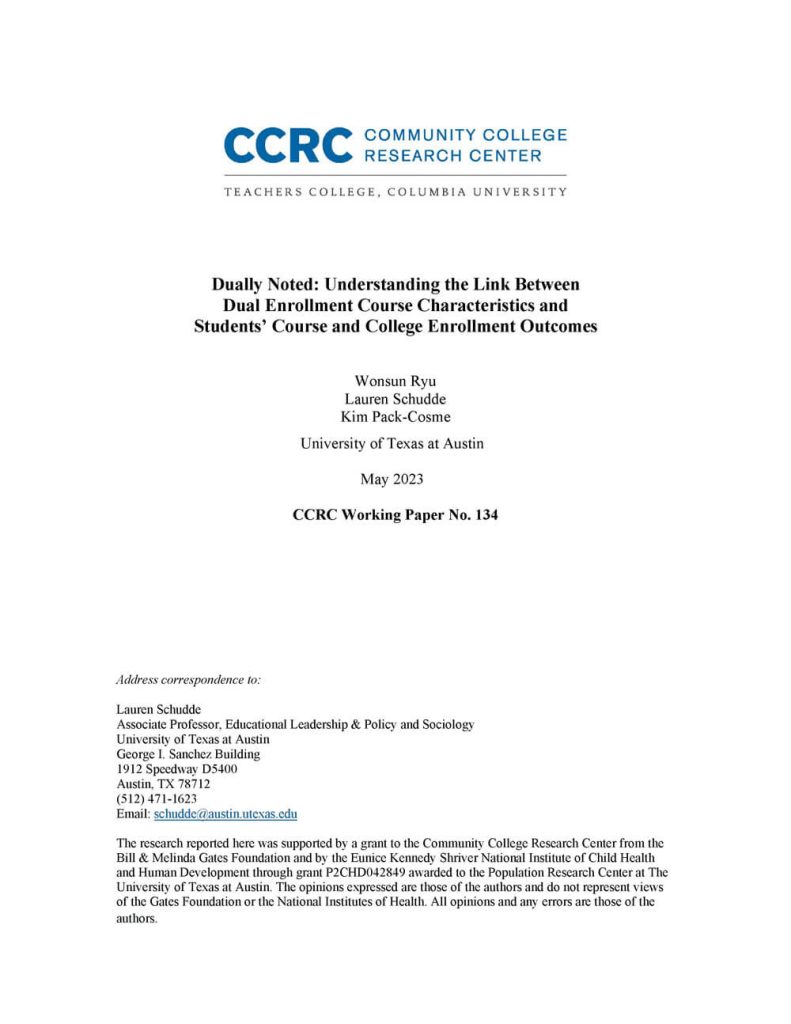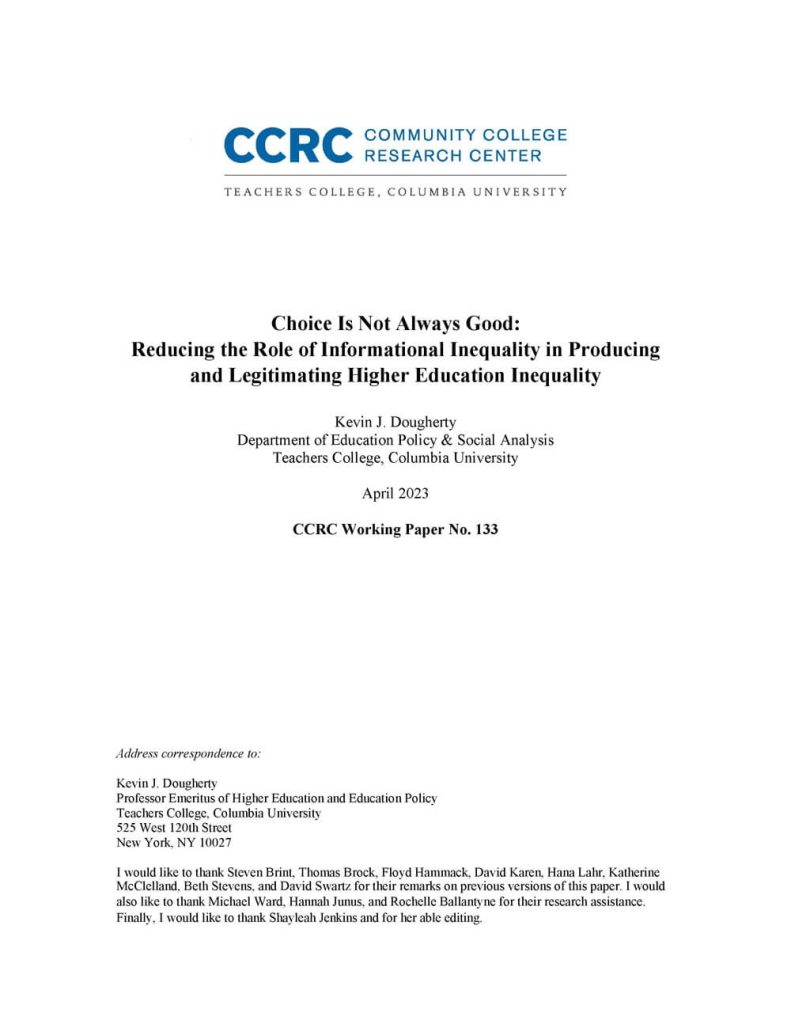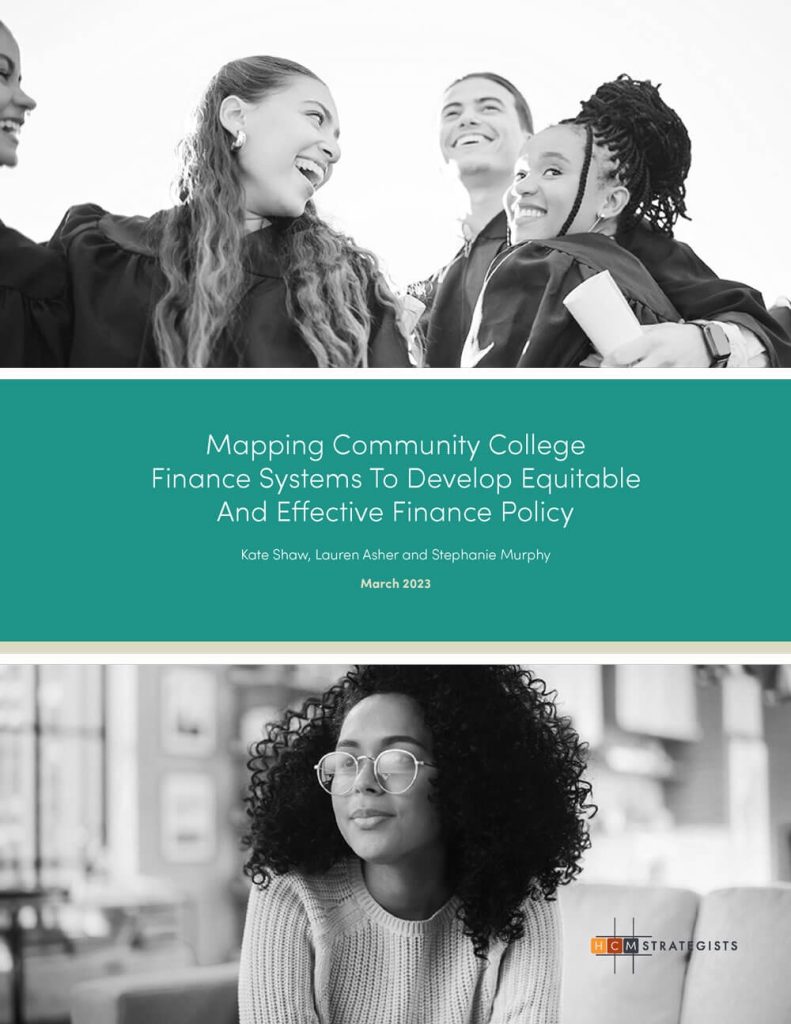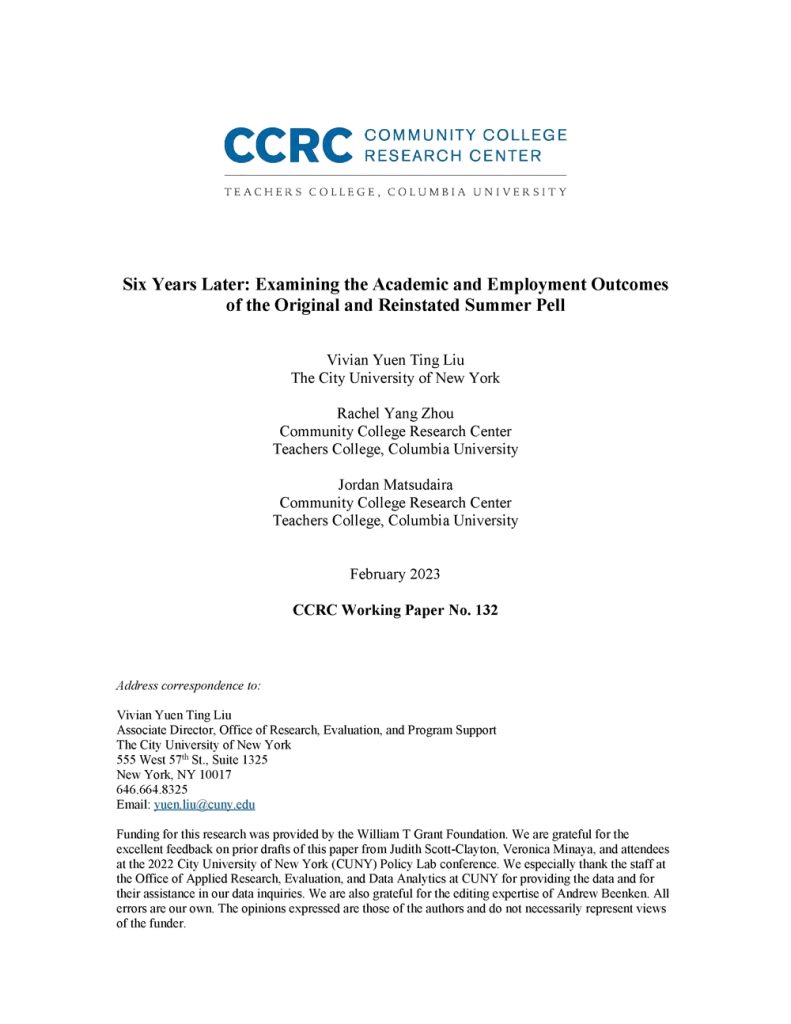Implementing Caring Campus: Strategies College Presidents Use to Improve Culture and Support Reform

Based on interview data, this report examines a set of seven strategies that presidents of community colleges implementing Caring Campus are using to develop a more positive college culture and to support this culture-focused reform.
Dually Noted: Understanding the Link Between Dual Enrollment Course Characteristics and Students’ Course and College Enrollment Outcomes

Using data from Texas, this paper describes dual enrollment course characteristics such as instructor affiliation, location, and modality and examines how these characteristics predict students’ course completion, course grades, and subsequent college enrollment.
Choice Is Not Always Good: Reducing the Role of Informational Inequality in Producing and Legitimating Higher Education Inequality

This paper examines how the process of making higher education choices in the U.S.—whether to enter higher education, attend a particular college, or follow a particular path through college—produces and legitimates social inequality.
Mapping Community College Finance Systems to Develop Equitable and Effective Finance Policy

This report describes the diversity and complexity of community college state finance systems, and how to identify the often competing incentives within them, by comparing the systems of three very different states: California, Ohio, and Texas.
Six Years Later: Examining the Academic and Employment Outcomes of the Original and Reinstated Summer Pell

Using administrative data from the City University of New York (CUNY), this paper examines the impact of the summer Pell program on community college student persistence, completion, and employment outcomes.
